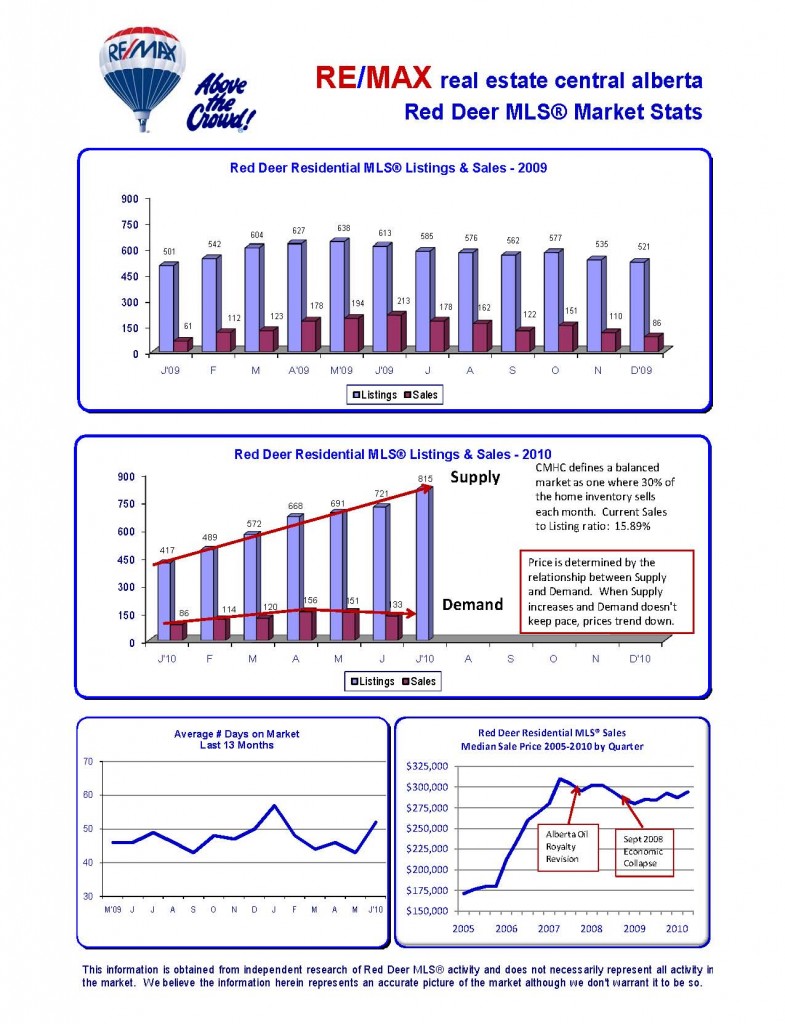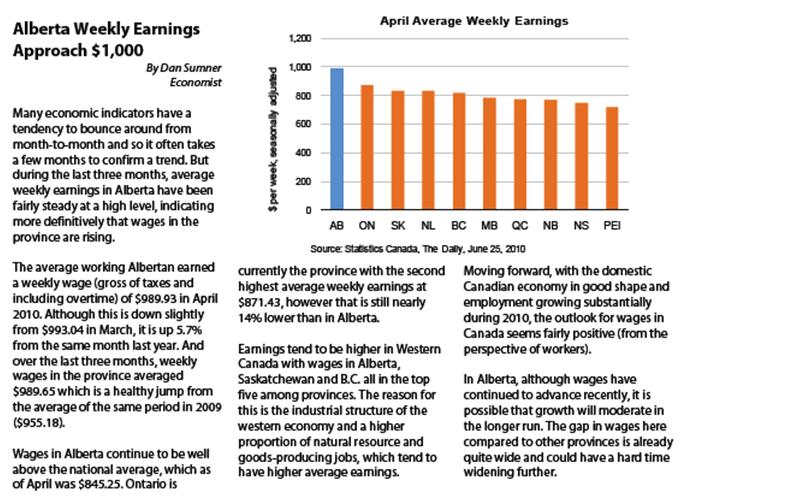Red Deer Weekly Market Update – July 22/10
Friday, July 23rd, 2010|
Market Update to July 22/10 Red Deer |
||||||
|
Price Range |
All Active |
Pending |
Active 1 Year Ago |
Sold MTD July 15/10 |
Sold MTD July 22/10 |
Sold MTD July 22/09 |
|
< 100 |
23 |
2 |
25 |
2 |
2 |
3 |
|
100 – 150 |
49 |
1 |
28 |
1 |
2 |
2 |
|
150 – 200 |
87 |
3 |
61 |
5 |
5 |
16 |
|
200 – 250 |
106 |
2 |
101 |
9 |
15 |
26 |
|
250 – 300 |
160 |
10 |
89 |
13 |
19 |
28 |
|
300 – 325 |
78 |
2 |
46 |
6 |
6 |
19 |
|
325 – 350 |
76 |
5 |
46 |
5 |
10 |
12 |
|
350 – 375 |
54 |
2 |
34 |
2 |
4 |
7 |
|
375 – 400 |
54 |
1 |
34 |
4 |
4 |
7 |
|
400 – 450 |
59 |
1 |
46 |
5 |
7 |
5 |
|
450 – 500 |
36 |
1 |
23 |
4 |
4 |
5 |
|
500+ |
79 |
5 |
66 |
6 |
6 |
2 |
|
Total |
861 |
35 |
599 |
62 |
84 |
132 |
|
Avg. Price |
$326,891. |
$325,971. |
$344,858. |
$331,024. |
$284,378. |
|
|
Days On Market |
51 |
49 |
52 |
50 |
49 |
|
The Exchange Rate and Inflation – The fear of deflation in the US appears to be on the rise once again. It’s rooted in the fear that private spending hasn’t yet strengthened sufficiently to offset a substantial reduction in stimulus spending (support for which is waning). At the same time there’s rising concern over the trade imbalance between China and the US. The link between the two, however, hasn’t really been discussed.
Deflation fears are rooted in the fear that reduced spending will further decrease capacity utilization (i.e., more factories will be idled more often). The increase in hungry firms, combined with a paucity of buyers, results in a possibility of general price declines. In isolated North Korea, this would be the end of the story, but for countries that are open to trade then consumer prices depend on another factor: the price of imported goods.
This channel of inflation is known as the exchange rate pass through. Its name reflects the fact that imported goods and services need to be purchased in a foreign currency, making the exchange rate vitally important. If the price of the foreign currency increases then so does the price of the goods and services that country produces, relative to the importing country, all else equal.
For instance, in the early 90s another North American country had a severe trade imbalance: Mexico. The Mexican central bank was maintaining the value of its currency artificially high vis-à-vis the US dollar. It simply wasn’t sustainable and devaluation followed.
Notwithstanding the fact that the local economy was in shambles, inflation soared from about 7% to 35% between 1994 and 1995. Why? One reason was due to the fact that imported goods became incredibly expensive overnight when their currency collapsed. This, of course, is an extreme example, but it illustrates the point.
Earlier this decade, between 2000 and 2005, the exchange rate pass through to inflation was a topic high on the radar screen for researchers at the US Federal Reserve Board and the Bank of Canada. Researchers were finding that this channel was becoming very weak. That is to say, exchange rate movements weren’t impacting import prices to the same extent that they were in the ‘80s.
What was the general consensus explaining the reduction? One explanation given was related to the change in the mid-‘90s by developed countries to implement a fixed inflation target. According to Professor John Taylor at Stanford, this change lowered the relative power of sellers relative to consumers, lowering their ability to pass increased costs on to customers. Another explanation, associated with Mario Marazzi work at the Federal Reserve, was that there was a fundamental shift that occurred in the economy, with the share of goods and services that are less sensitive to exchange rate changes dramatically increasing their share of imports.
A final rationale, also from Mario Marazzi body of work, highlights the important impact of China and its decision to peg its currency to the US dollar. Chinese exporters are effectively shielded from any exchange rate movement. Exporters from other foreign countries are cognizant of this fact and must compete for access with the US market with China, making them less likely to change their prices in response to exchange rate fluctuations.
The timing is fairly good for the US for it to fix its trade imbalance. Efforts to fix the US trade deficit with China will no doubt revolve around the latter’s policy of fixing its exchange rate with that of the $US and making Chinese imports more expensive, while at the same time making US exports cheaper.
The US economy could sure use the boost in demand and at the same time could easily handle any related price inflation (we’d expect that the exchange rate pass through channel will strengthen the larger the movement in the currency). The trick will be in making sure the shift is controlled and not a stampede, the risk of which is pretty low given the Chinese inherent preference for stability.


